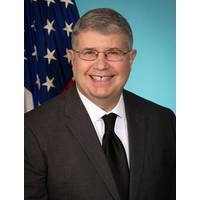
NUWC Division Newport Engineer Earns DON Superior Civilian Service Award
is currently detailed to the Office of Naval Research Global (ONR-G), recently was awarded the Department of the Navy’s (DON) Superior Civilian Service Award.The award is the second highest civilian award which recognizes employee contributions that are high in value. Shallcross, of San Diego, California, was honored for sustained exceptional service as science advisor and special assistant to the commander, U.S. 3 rd Fleet, from August 2022 to August 2025.During his assignment, Shallcross proactively worked to identify and close technology development gaps in direct support of the commander'
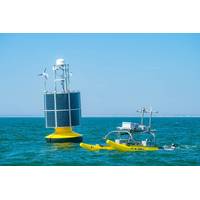
OPT to Deploy Multiple PowerBuoys for US Coast Guard
maritime surveillance buoys for a U.S. Coast Guard mission under the U.S. Department of Homeland Security.The contract covers the delivery and operation of MERROWS-equipped PowerBuoy systems to support a demonstration aimed at providing persistent maritime domain awareness off the coast of San Diego, California. Near-term delivery will include four maritime surveillance-equipped PowerBuoy platforms.The buoys will be integrated into the Department of Homeland Security’s chosen command, control, communications, computers, combat systems and intelligence environment and deployed alongside surveillance
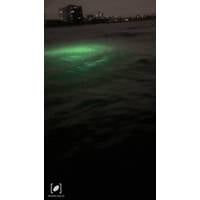
2025: Fascinated with Subsea Discovery
identified or explained.As of August 2025, the Enigma app had logged over 9,000 U.S. sightings within 10 miles of shorelines and major waterways. More than 150 reports describe objects hovering above or ascending into or descending from bodies of water. The U.S. states with the most USO reports are California (389) and Florida (306).New Wave Media will keep you posted on subsea discoveries in 2026
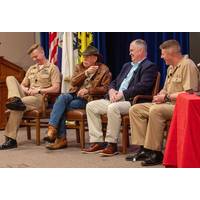
NUWC Division Newport Hosts Warfighters Panel, ‘Cup O’ Joe’ to Celebrate Veterans
Academy when they were paired together on a boat for the sailing team. Dean, who grew up in the Great Lakes region of Michigan and was recruited to the U.S. Naval Academy in Annapolis, Maryland, was the skipper, while Susan served as crew.Soon after graduating in 1998, they each ended up in San Diego, California, though on different assignments and deployments schedules. Around 2002, the Balciraks were transferred to Naval Station Newport for shore duty at the Surface Warfare Officers School, and this ended up being their last tour as they wanted to focus on starting a family.When asked how he views his

Researchers Link Antarctic Ice Loss to Subsurface “Storms”
Researchers at the University of California, Irvine and NASA’s Jet Propulsion Laboratory have identified stormlike circulation patterns beneath Antarctic ice shelves that are causing aggressive melting, with major implications for global sea level rise projections.In a paper published recently in Nature Geoscience, the scientists say their study is the first to examine ocean-induced ice shelf melting events from a weather timescale of just days versus seasonal or annual timeframes. This enabled them to match “ocean storm” activity with intense ice melt at Thwaites Glacier and Pine
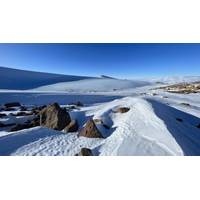
Scientists Discover Six Million Year Old Ice in Antarctica, Offers Unprecedented Window into a Warmer Earth
, Christo Buizert and Jenna Epifanio of Oregon State; Valens Hishamunda, Austin Carter and Michael Bender of Princeton; Lindsey Davidge, Eric Steig and Andrew Schauer, University of Washington; Sarah Aarons, Jacob Morgan and Jeff Severinghaus of Scripps Institution of Oceanography at University of California, San Diego; Andrei V. Kurbatov and Douglas Introne of the University of Maine; Yuzhen Yan of Tongji University; and Peter Neff of the University of Minnesota.COLDEX is supported by the NSF Office of Polar Programs; the Science and Technology Center Program at the NSF Office of Integrative Activities

UFO App Logs Mysterious Underwater Sightings
; “lake,” or “beach” (≈17%), and roughly 500 of those occurred within 5 miles of a coastline (≈5.6% of the total). More than 150 reports describe objects hovering above or ascending into or descending from bodies of water. The U.S. states with the most USO reports are California (389) and Florida (306), which is not surprising, given their large coastal populations.Map of USO reports of the U.S. West Coast. © Enigm
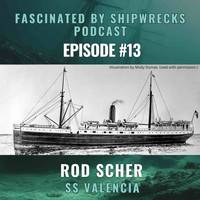
Fascinated by Shipwrecks Podcast: Episode 13
Kathy A. Smith talks with author Rod Scher who recounts the early history of the ship, why she was on a voyage that wasn’t her typical route, and how a critical navigation error began the final voyage of the doomed ship. Rod Scher began his working life teaching English in high schools in California and Oregon; he continued teaching at the post-secondary level until 2016. In between, he worked as an editor for textbooks and magazines. Rod has built a "retirement" career as an experienced writer/editor who has annotated or edited many books and written countless magazine articles
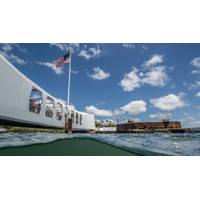
Oil Leaking from USS Arizona Could Provide Guidance for Thousands of WWII Shipwrecks
and 2018.Researchers, led by the University of Houston and Woods Hole Oceanographic Institution (WHOI), analyzed oil samples collected from multiple leak points on the sunken battleship, using advanced molecular fingerprinting techniques. The results confirm the oil is a heavy fuel oil refined from California crude, consistent with U.S. Navy fueling practices in the early 1940s. Despite being underwater for decades, the oil retains high concentrations of polycyclic aromatic hydrocarbons (PAHs), compounds known for their persistence and potential toxicity.WHOI Marine Chemist Chris Reddy collects oil




 December 2025
December 2025





